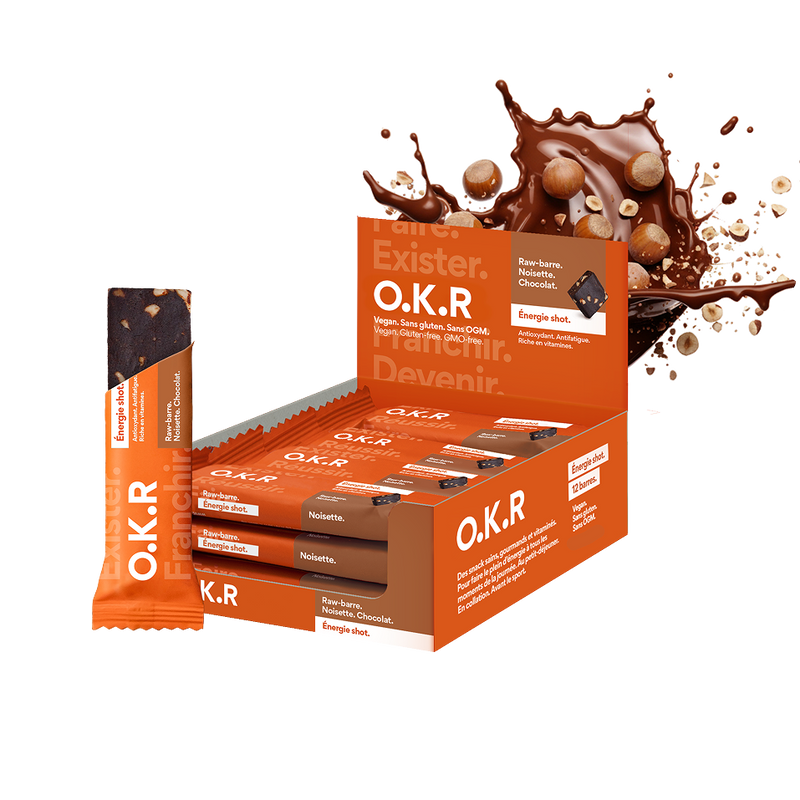What are lipids?
Lipids play many roles, depending on their nature, as we distinguish between reserve lipids, structural lipids, and functional lipids. Reserve lipids are located in adipose tissue and are mainly stored in the form of triglycerides. They constitute the main energy reservoir of our body. Adipose tissue acts as a thermal insulator, meaning it helps maintain our body temperature.
Did you know?
Triglycerides are fatty acids synthesized by the liver and intestines, but can also be obtained from food. High blood triglyceride concentrations are considered a cardiovascular risk factor.
Structural lipids make up the cell membrane and maintain its integrity to ensure intracellular exchanges. Functional lipids can be the vectors of fat-soluble vitamins (A, D, E and K) which allow their absorption and transport within the body. In addition to participating in the prevention of numerous pathologies (cardiovascular diseases, inflammatory diseases and cancers), they play an important role in the production of molecules essential to the body such as hormones. The metabolism of dietary lipids begins during their digestion and intestinal absorption. Lipid nutrients will be cut into smaller molecules by an enzyme which will release fatty acids, later captured by the liver. The majority of circulating fatty acids are captured by body fat and stored in the form of triglycerides in adipose tissue. These constitute a significant and easily usable energy reserve.
What are the different fatty acids and in which foods can you find them?
Consuming fat is therefore crucial for the body, however some food sources are better than others.
Saturated fatty acids.
Saturated fatty acids are naturally produced by the liver, brain, and adipose tissue, but are also provided by food. Saturated fatty acids are found in large quantities in butter, cream, cold cuts, whole dairy products, cheese, meat, but also in palm, coconut, and palm kernel oils. Saturated fatty acids can be classified into three categories according to their length: short, medium, or long chain. Short- and medium-chain fatty acids play a preventive role in the development of colon cancer. They are non-hypercholesterolemic, meaning they do not increase cholesterol levels and are not associated with the risk of cardiovascular disease. They are present in butter and cheese. Long-chain saturated fatty acids are the major components of the myelin sheath (the envelope covering neurons) in the cerebral nervous system. In excess, long-chain saturated fatty acids can have atherogenic (participate in the formation of lipid plaques on the arteries) and thrombogenic (participate in the formation of clots) effects and are hypocholesterolemic, that is to say they play a role in reducing blood cholesterol levels.
Unsaturated fatty acids.
There are two types of unsaturated fatty acids: monounsaturated and polyunsaturated.
Monounsaturated fatty acids.
Monounsaturated fatty acids, or omega-9 (oleic acid), are synthesized by the body and are also part of triglycerides. They play a preventive role in the development of cardiovascular diseases. They are mainly found in olive oil, avocados, and oilseeds (almonds, walnuts, etc.), but can also be found in certain animal products, such as duck fat.
Polyunsaturated fatty acids.
Polyunsaturated fatty acids are so-called essential fatty acids, because our body cannot synthesize them and therefore must be provided by food. There are two types
1. Omega 3
Omega 3s are hypotriglyceridemic fatty acids (reduce triglyceride levels), anti-inflammatory, increase HDL-cholesterol (good cholesterol) while improving vision and participating in the prevention of neurodegenerative diseases. There are 3 of them:
- Alpha-linolenic acid (ALA): Found in flaxseed oil, rapeseed oil, and walnuts. This acid is the precursor to EPA and DHA. Based on an average energy requirement of 2000 kcal, it is recommended to consume 2.2 g of alpha-linolenic acid.
- Eicosapentaenoic acid (EPA): This acid is an anti-inflammatory that helps protect the arteries and heart. It also limits bone demineralization. The recommended dietary intake for this acid is 250 mg/day.
- Docosahexaenoic acid (DHA): This is the main fatty acid found in neuron membranes. It plays a fundamental role in brain and vision development. Like EPA, DHA plays a role in heart protection. The recommended dietary intake for this acid is 250 mg/day.
Flax and hemp seeds, walnuts, and oils derived from them are particularly rich in omega-3, as are oily fish. Omega-3s have a recognized protective effect on the cardiovascular system. DHA and EPA are mainly found in oily fish such as herring, mackerel, and sardines.
2. Omega 6.
-Omega 6 or linoleic acid is hypotriglyceridemic, helps maintain the integrity of your epidermis, our immune defenses and promotes optimal reproductive function. In excess, they can be inflammatory and increase the risk of cardiovascular disease, diabetes and obesity. Omega 6 found in corn, soybean and sunflower oils are also considered "good fats" but in excess, they prevent the optimal use of omega 3. In today's diet, we see an excessive average intake of omega 6. However, the balance of the omega 6 / omega 3 ratio is an important element for the proper functioning of our body. In this context, the omega 6/omega 3 ratio should be between 4 and 10, with the ideal being 5. If the recommended daily intake of omega 3 is 2.7g per day and the ratio should ideally be 5, then you are advised to consume around 13.5g of omega 6 per day. At OKR, we use quality sources of lipids such as rapeseed and sunflower oils, almonds, yellow flax seeds, etc.
It's therefore important not to demonize the foods you eat, as they all play a role in your nutritional balance and your health. Foods that are initially considered "fatty" are not necessarily bad for you.
How much fat do you need?
ANSES recommends a daily fat intake representing 35 to 40% of total energy intake (TEI). These recommendations place a strong emphasis on the quality of fats, not their quantity. Here are the recommended daily nutritional intakes for each type of fatty acid, based on an average energy requirement of 2000 kcal.
- Saturated fatty acids: <8% of the ATI or 22 g
- Monounsaturated fatty acids: 20% of the TEI or 44 g
- Polyunsaturated fatty acids including:
-> Omega 6: 10% of the AET or 22 g -> Omega 3: 2% of the AET or 4.4 g including: ->ALA: 1% of the AET or 2.2 g ->DHA and EPA: 0.12% of the AET or 250 mg each.
Which fatty acids should be limited as much as possible?
It is recommended to consume a minimum of trans fatty acids in your diet. They increase the level of LDL cholesterol (bad cholesterol) and accelerate the cholesterol production process in the arteries. In other words, these are fatty acids harmful to your health that you are advised to avoid as much as possible. Trans fatty acids are obtained by cooking oils at excessively high temperatures, during the manufacture of refined oils, or during a hydrogenation process used in the food industry to solidify the fats used. Today, food brands are required to indicate the presence and quantity of trans fatty acids in the product.
Did you know?
In OKR products you will not find any processed fatty acids.
When should you consume lipids during the day?
“Don't eat fat in the evening; you'll store it much faster!” This phrase is often misunderstood because it doesn't reflect the truth at all. What matters is your overall fat intake throughout the day. Just like protein and carbohydrates, it's important to spread your fat intake across all your meals: breakfast, lunch, and dinner, according to your needs.
Can you lose weight faster by cutting out fat from your diet?
Logically, yes, removing fat from your diet allows you to lose weight faster. In fact, 1g of fat provides 9 kcal, while carbohydrates and proteins only provide 4 kcal per gram. However, when you consume fat again, your body will store these new reserves. This greatly increases your chances of regaining the weight you lost. It's important to understand that fats, like carbohydrates and proteins, do not make you gain weight if consumed according to your needs. They are, in fact, absolutely essential to your body.













